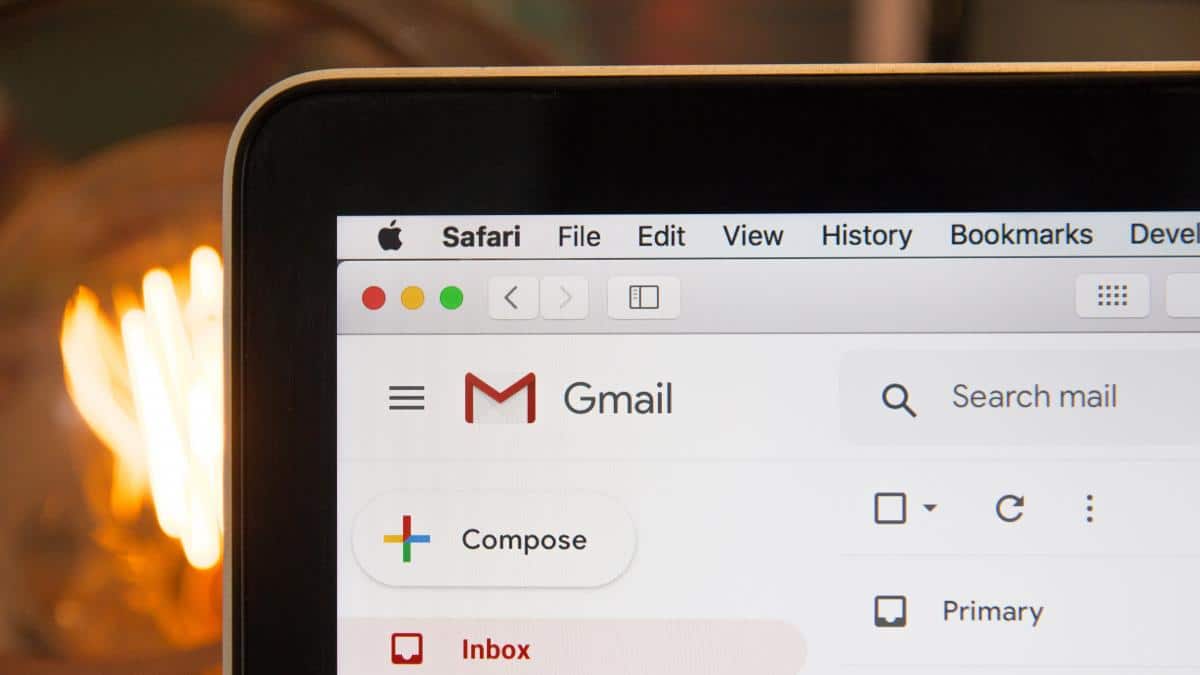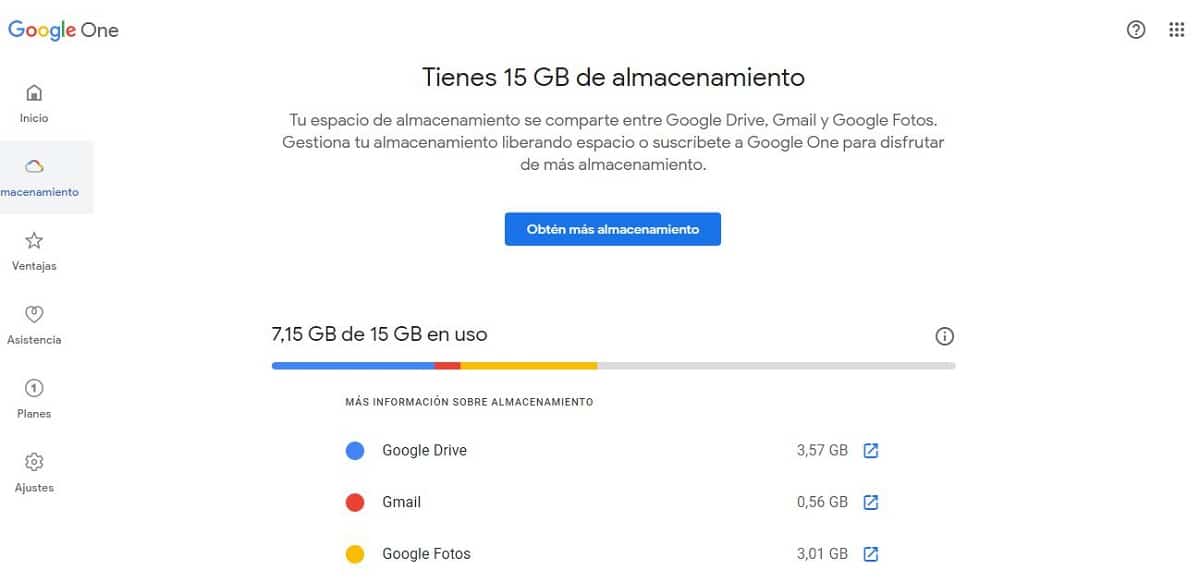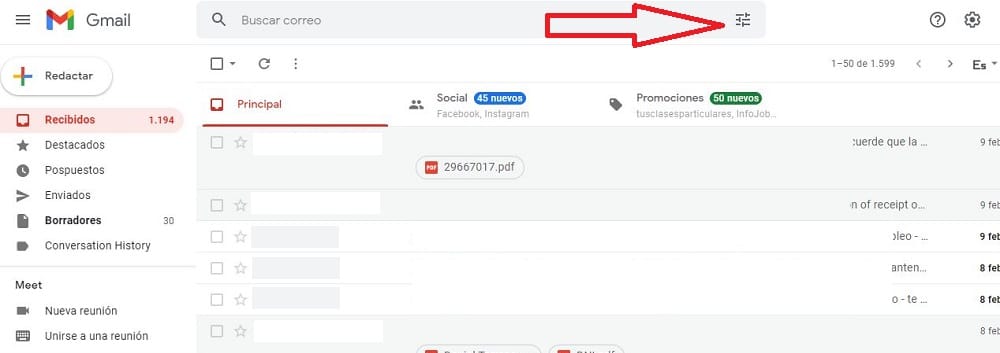
Almost everyone already has an account. Gmail email, because there are many advantages it offers. Also, it is very easy to use. However, if you have had this e-mail account for a long time or you receive a large number of e-mails every day, we run the risk of facing an unsuspected problem: space is running out! And it is that, the available memory is enormous, but not infinite. That is why in this post we are going to see how you can free up Gmail space.
Google offers a 15 GB storage space. At first it seems like a huge amount of memory, almost incomprehensible. And yet, it ends sooner than we expect. In fact, sooner or later we are going to come face to face with this situation, so everything that comes in the following paragraphs is as useful for those who already have the problem as for those who do not yet, but want to get ahead of it.
How to know how much free space I have left in Gmail?
That is the first question to ask yourself. The way to find out is very simple: just go to the following link: OneGoogle Storage. A graph like the one shown in the image below will appear there, with the amount of space used (bear in mind that the space used is shared between Google Photos, Google Drive and Gmail) and available space.

How much free space do I have left in Gmail?
If the graph on this page shows worrying results, with capacity at the limit, action should be considered. The first solution that comes to mind to alleviate this problem is to increase the size of the memory. Google offers us the possibility of pay more to increase available space. The proposal for its users is three plans different:
- Basic (€1,99 per month), to increase the storage capacity to 100 GB.
- Standard (€2,99 per month), with which we would have 200 GB.
- Premium ($9,99 per month), which offers an almost monstrous amount of space at 1TB.
Through these payment options, we would access an immense amount of memory, in addition to enjoying other advantages. However, for most users, this storage capacity far exceeds their needs, so it is not worth paying. There are other free ways to free up Gmail space easily and efficiently, to continue using our email without further obstacles. Let's see them one by one:
Delete old emails

Delete old emails to free up Gmail space
Without realizing it, over time we are accumulating a huge amount of received and sent emails that are saved for years. Make no mistake: many of them are absolutely expendable. So, just as we uninstall those applications that we no longer use from our mobile phones, we must also do the same with the outdated messages.
You have to be brave and erase without fear. Don't be afraid to delete some important mail: if it is, it would already be saved in a specific folder. In any case, to avoid unpleasantness, it is advisable to be prudent and only delete the oldest emails. We can set a limit: for example, only delete those that are 3 or 5 years old. Even more.
Obviously, deleting all those emails one by one is a slow and tiring job. It is best to use the tools that Gmail gives us. This is how we should proceed:
- First we go to the search bar at the top and click on the right side. If we move the cursor over the icon it will read "show search options".
- Among the numerous options that open up, we choose the one that allows us to choose date range and click on "Search".
- After this, all the emails sent and received in those will appear on the screen, which we can select and delete using the usual commands.
Delete the bulkiest emails

Free up Gmail space by deleting bulky emails
Like everything in life, also when it comes to freeing up space, quality counts more than quantity. It may be more efficient to delete one bulky email with heavy attachments than a hundred simple emails containing just a little bit of text. That is why it is highly recommended. get rid of emails that take up the most space. How to find and remove them quickly?
- First of all, we go to the search bar at the top. There, on the right, we click on the icon (see image above) to access the advanced options.
- Within the options that open, we look for the "Size". At this point we must decide from what figure we will determine what is a large email or not. We will use the tab "greater than", where for example, we could enter a value of 10 MB*.
- Finally we click on the button "Search" so that all emails with a volume greater than 10 MB appear, which we can delete to free up space in our account.
(*) Another quick way to do it is to write larger:10Men (if the set size is 10 MB) the search bar and press «Enter».
At this point we must insist on a very sensible recommendation: no matter how short of space our Gmail is, it never hurts double check everything we are going to delete. Or make sure that we have a copy of what is important, since our goal is not to lose information, but to organize ourselves better.
Empty the spam folder

Free up space in your Gmail by deleting the contents of the spam folder
Besides being annoying, the spam (advertising messages) consumes a considerable volume of storage space. Double reason to get rid of him.
Many of these emails we do not even see them, as they are automatically saved in the spam folder. But even being there they still take up valuable space. The spam folder is located in the left column. Sometimes it is hidden and you need to click on the tab "More" to expand and find it. After this, the removal process is simple: just use the delete option. "Delete all spam messages now."